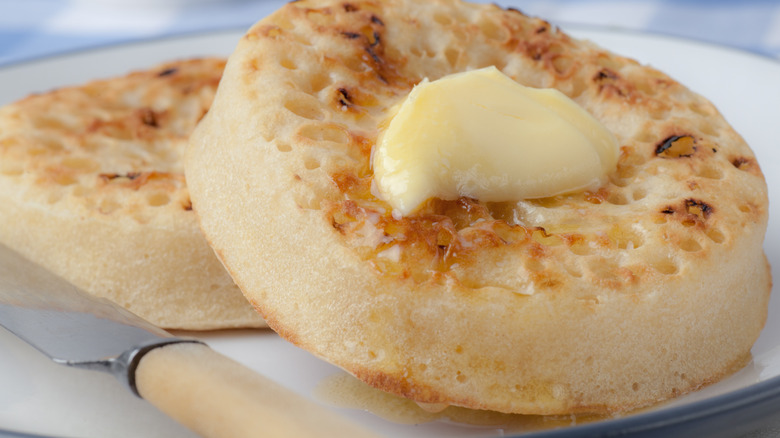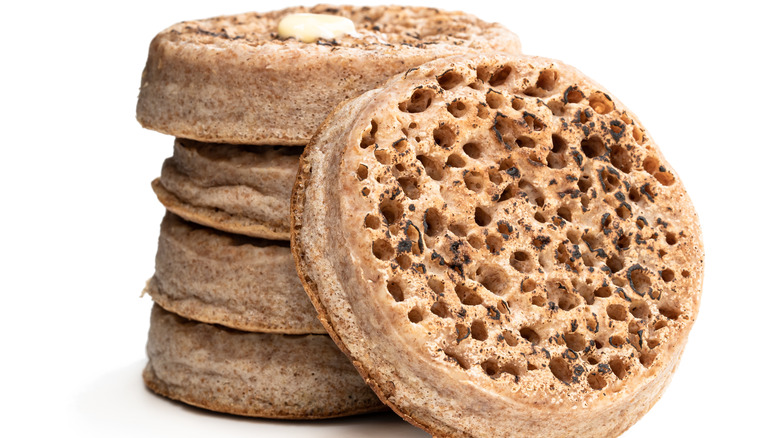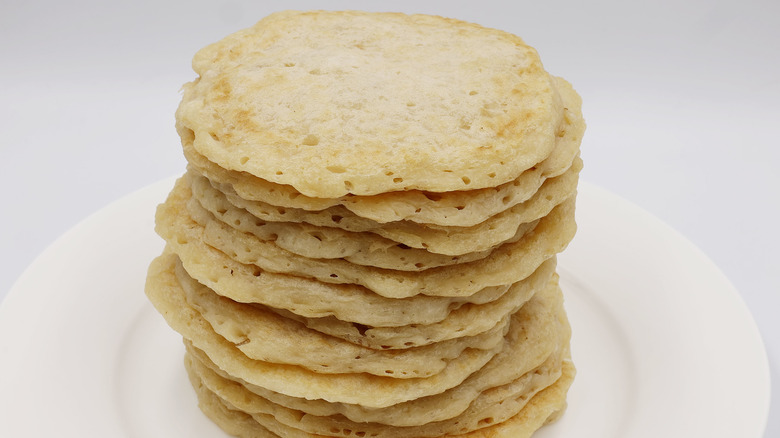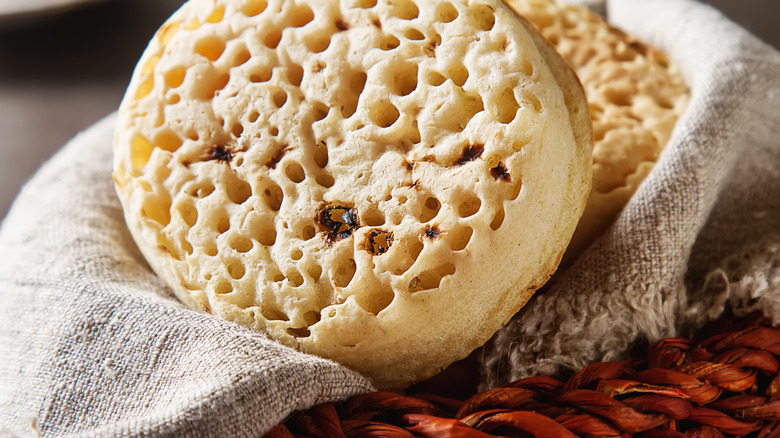Pikelets Vs Crumpets: What's The Difference?
Crumpets, scones, pikelets, and tea — these classics are a constant when it comes to British essentials. On average, the British consume more than 36 billion cups of tea annually, which equates to about 100 million cups daily (per the UK Tea & Infusions Association). Those numbers are enough to fill quite a few mugs, though nothing goes better with a cozy drink than your choice of teatime delicacy.
Various pastries, sandwiches, and breads tend to accompany a standard afternoon tea. However, you don't need to head across the pond — or go all out with towers of food — for a delightful tea time. You can make these treats yourself. If you go with scones, just remember to use cold butter for the best results. For pikelets and crumpets, however, any form of butter works.
Both crumpets and pikelets come flat and topped with holes, though that's where the similarities end; the two are distinct foods, both worthy of their own cup of tea.
Move over, English muffins
At first glance, crumpets appear nearly identical to English muffins. Both are round and porous bread-like foods. According to MasterClass, however, a crumpet is in its own category. Crumpets consist of flour, water, yeast, salt, milk, and baking soda. They can be cooked on the stove, griddle, or frying pan. Although you can certainly put in the effort to make your own from scratch, it's often easier to pick up a toaster-ready pack from the supermarket, though they can be challenging to find in the U.S.
The telltale trademark of a crumpet is its texture. According to Better Homes & Gardens, crumpets have a spongier texture with a much looser and less bready consistency than English muffins. They're griddled only on one side and served whole rather than sliced in half. The British Corner Shop echoes the crumpet's defining traits, clarifying that a crumpet is made of batter rather than dough.
Pikelets are crumpets' denser, thinner cousin
Pikelets were perhaps best described by the BBC "as a cross between a drop scone, Scotch pancake, and a crumpet." If that definition confuses or overwhelms you, you're not alone. Think of a pikelet as a porous, pancake-adjacent breakfast. Like a crumpet, a pikelet has a top dotted with holes. However, it's thinner and less airy than its crumpet cousin.
Some pikelet recipes call for yeast, though different rising agents will do. The BBC pikelets are made with yeast and standard batter ingredients; however, other recipes include baking powder or self-rising flour (via Taste). The Healthy Mummy suggests pairing your pikelet with toppings beyond butter, like pear and chocolate, and even beyond breakfast with savory recipes like ricotta and cherry tomato. Pikelets certainly have parallels to pancakes, but they are a bit more substantial and grown up. If you must get out the maple syrup, class it up by whipping up this chorizo-maple syrup, which pairs as well with a pikelet as it does with a crumpet.
The differences have sparked online debate
Although pikelets and crumpets certainly look and taste different, those differences can be difficult to spot for the uninitiated, particularly given that they're both in the tea and breakfast category. If you're not from the United Kingdom or have never toasted a crumpet yourself, you likely won't know which one is which.
But if you're using the names pikelets and crumpets interchangeably, beware. Ignoring the differences might lead you to receive the ire of breakfast traditionalists. In April 2021, crumpets even began trending on Twitter, thanks to an online discussion about mislabeling them as pikelets. "Alas, to me (and seemingly many other sensible Northerners), these will always be #pikelets and nothing, nor nobody will change my mind," tweeted media personality Michelle Dewberry, alongside a picture of a crumpet.
Dewberry received varied responses, with many Twitter users chiming in that they, also Northerners, know the difference between pikelets and crumpets. Calling a crumpet a pikelet or vice versa doesn't seem to be indicative of any one geography, but the British feel strongly about getting the names right. No matter which name you give your favorite British carb, however, let's just call both foods what they really are: delicious vehicles for butter.



